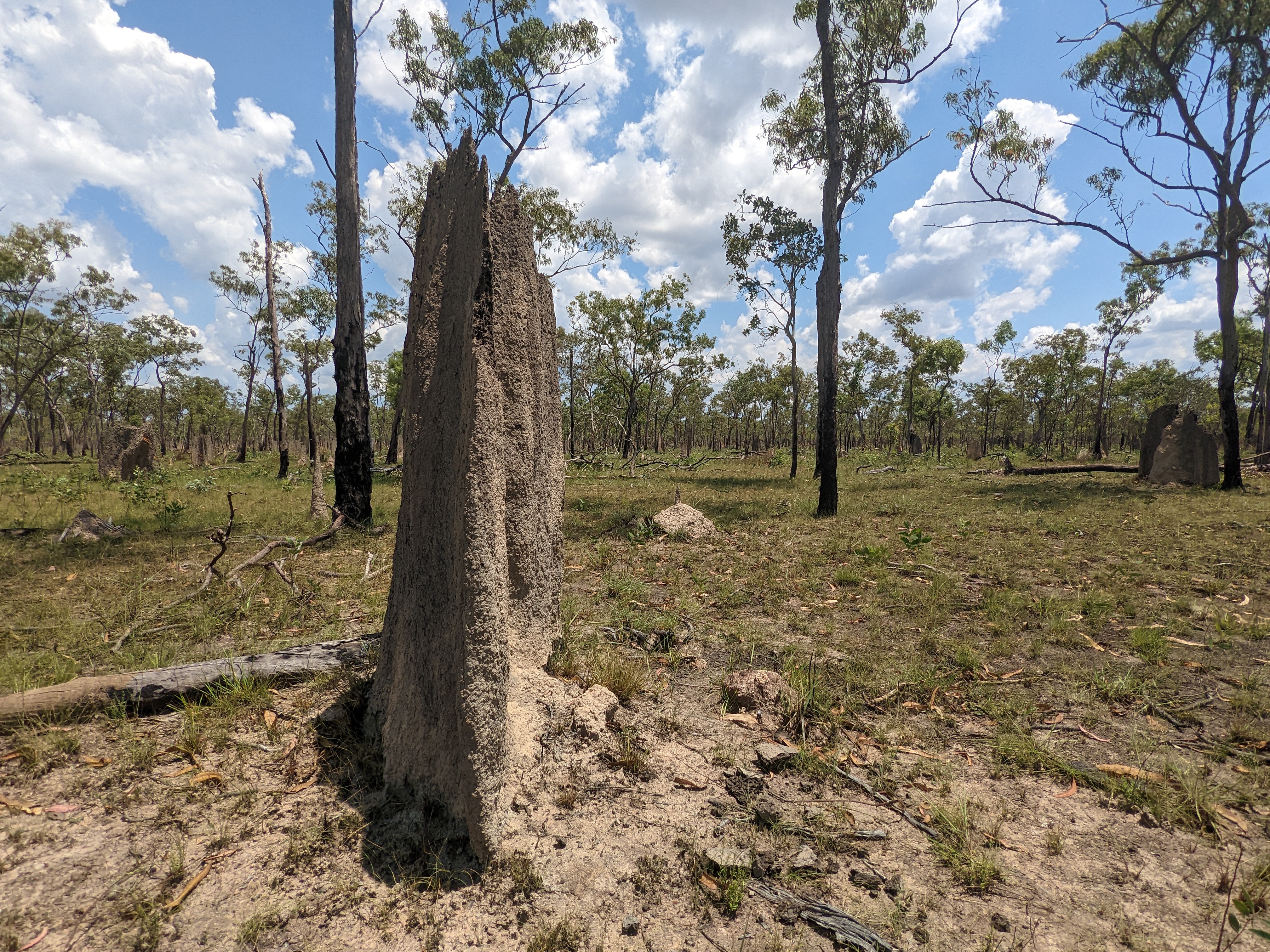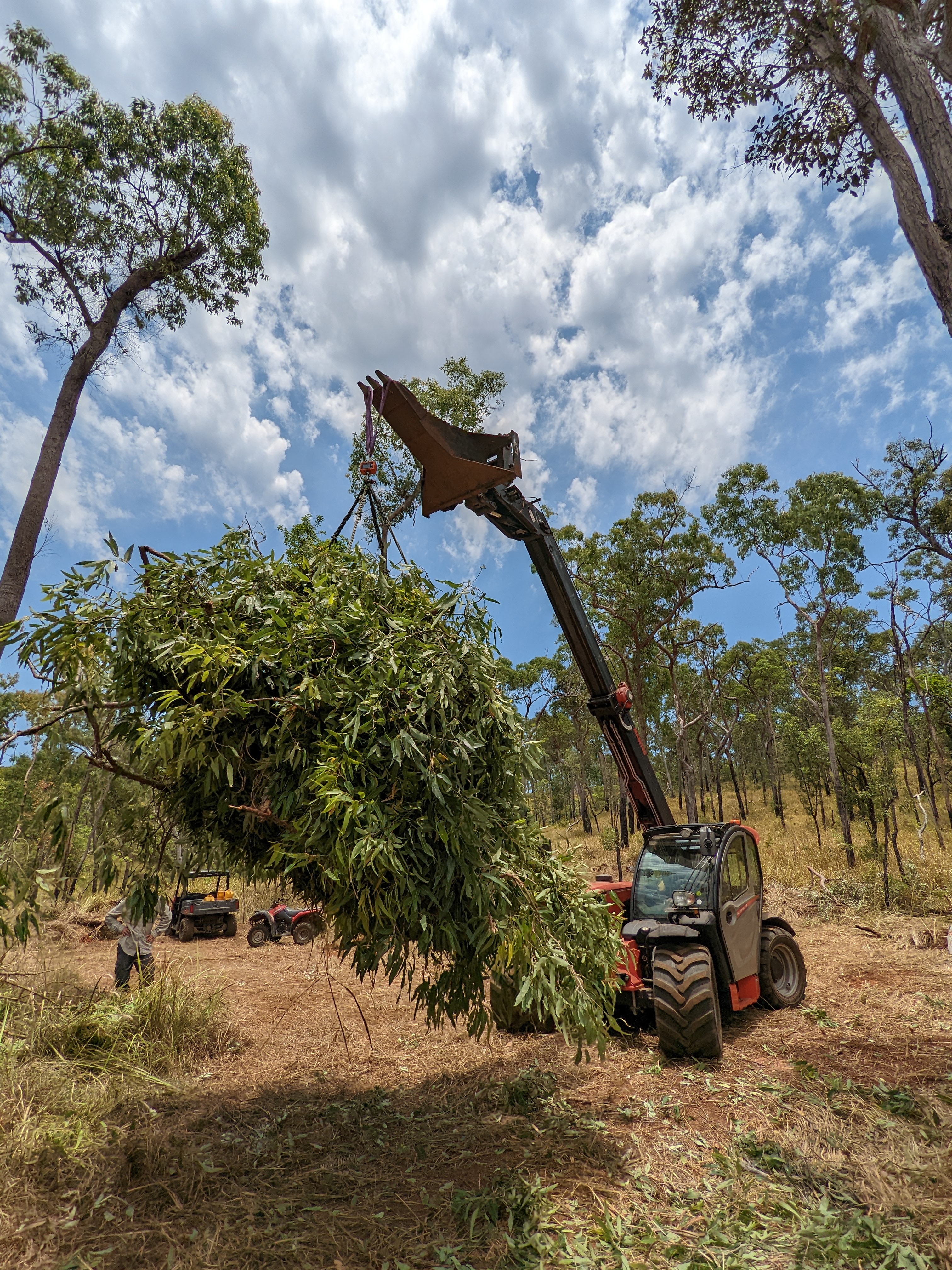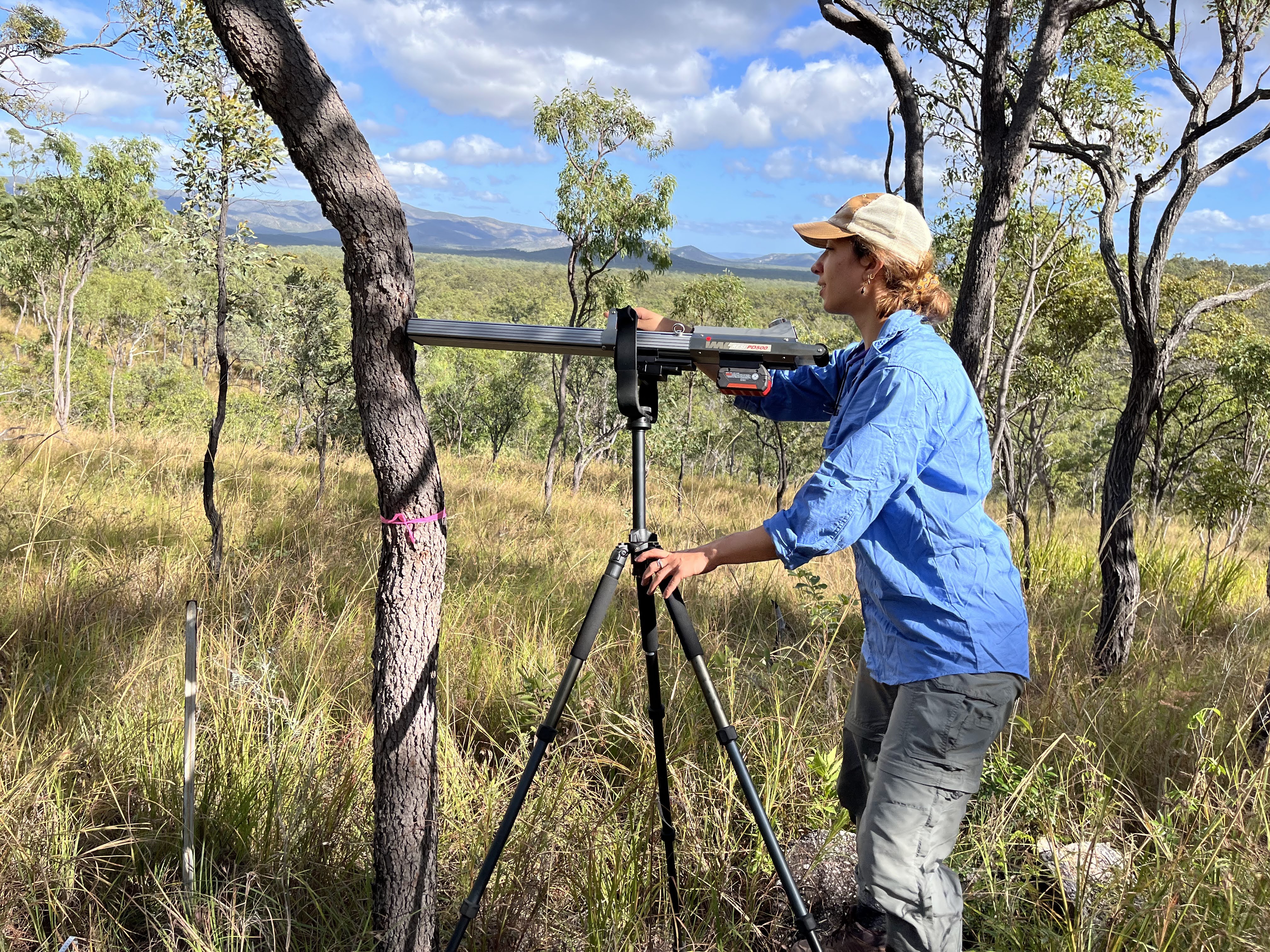
Forests store carbon in the towering trees that we walk amongst in the woods, but you don’t have to only look up to find carbon. At the ground level, soils, accumulated organic matter, and fallen deadwood all store carbon. However, as these materials break down, gaseous forms of carbon are released, thus moving carbon out of ‘terrestrial storage’ and into that of the atmosphere.
I am interested in the dynamics of this carbon balancing process: specifically, how do trees store carbon as they live, and how is carbon released from trees once they die?
Both insects and microbes play a role in wood decomposition. Termites are of particular interest when it comes to wood carbon cycling, especially in tropical systems where they can hollow out the inside of living trees. Termites will also produce methane in addition to carbon dioxide as they break down organic materials, having interesting implications for global methane budgets. In my PhD, I am investigating how termites in the Australian savanna interact with the carbon stored in trees, as well as the role that termite mounds play in the methane budget.

My current research projects are as follows:
Changes in internal stem damage throughout trees in Far North Queensland savannas: Trees in the Australian savannas are frequently hollowed out by termite or microbial activity. Previous estimates of this internal stem damage have largely quantified biomass along a single axis of the tree at DBH, and I am curious to understand how (and if) this damage extends up into the canopy.

To get a full look at the inside of trees and how damage is occurring and changing, I worked with a team from Arbor Meta to conduct a destructive harvest study in the Iron Range. In this project we are determining how damage accumulates throughout the entire tree but are also able to test the accuracy of terrestrial laser scanning (TLS) in predicting tree aboveground biomass. Stay tuned for a publication highlighting our findings, hopefully out soon!
In a project at the Australian Wildlife Conservancy’s Brooklyn Sanctuary, I am using a resistograph drill to measure internal stem damage at four points at increasing heights on the tree. I will test how the proportion and area of damage changes across heights on the main stem to better understand how vertical trends in internal damage reduces how much biomass a tree can store.

Termite mound methane production and methanotrophic communities on the Australian savanna: Termite mounds dot the dry tropics and have a noticeable presence on the savanna landscape in northern Australia. Termites are known to produce methane as they break down organic material via gut microbial symbioses, and I am interested in measuring the methane emissions that flux out of their mounds. Across three species of termites, I am exploring the intra- and inter-mound flux variation and hope to scale my results to provide landscape-level termite derived methane flux estimates. I am also looking to describe if microbial communities (specifically methanotrophs) within the mound material explain different levels of mound methane flux.